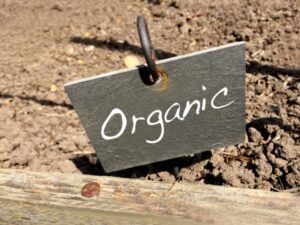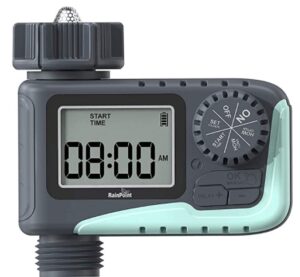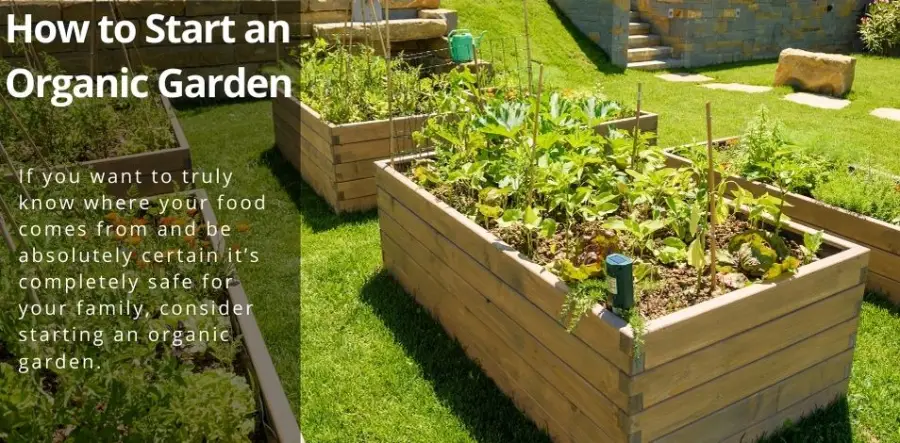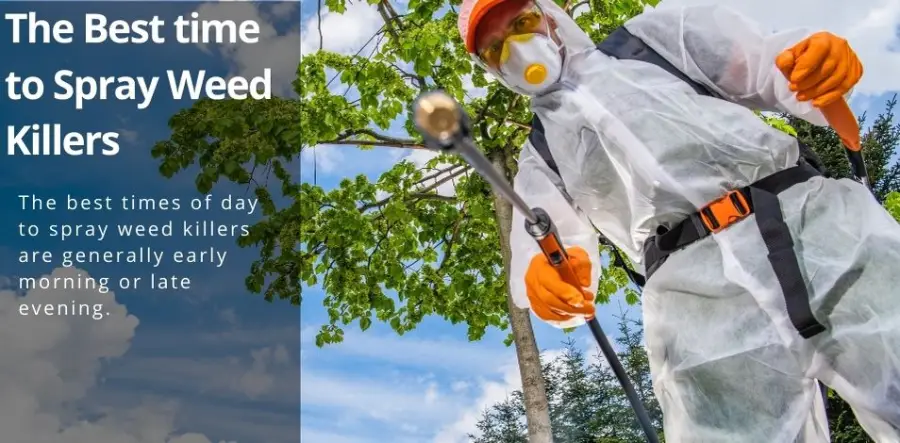Even in the world of organic food, the produce you buy at a grocery store is probably just as far away from its natural state as any other type of food. If you want to truly know where your food comes from and be absolutely certain it’s completely safe for your family, consider starting an organic garden.
Table of Contents
ToggleChoose the right place
The most important step in starting a garden is choosing your plot of land. This should be a well-drained area that gets plenty of sunlight and isn’t near anything you don’t want to have spray on it. You’ll also need to consider the location from a distance – if you’re too far away from water resources, getting fresh clean water to your garden can be difficult.
Choose the best soil
If you already have a spot picked out to start your garden, it’s time to choose the best soil for you. The ideal kind of dirt is called “loam” – this is slightly acidic and full of nutrients. If you don’t have loam soil on-hand to plant your garden with, there are several ways that you can make your own. You can take advantage of nature by choosing to use soil that has decomposed plant matter in it or even create your own compost. There are many other organic materials you could add to the soil if necessary, so get creative!
If you’d like to start an organic garden but aren’t sure where to start, check out this video to find out more about organic gardening
Tips For Starting Your Organic Garden
Make sure you have the right tools before starting your garden. When choosing shovels and hoes, make sure they’re both lightweight enough for you to use without tiring quickly. Digging spades are great for breaking up soil while smaller hand trowels can help you make smaller holes or plant seeds.
Keep your shovels and other garden tools clean by scrubbing them down with a plastic brush after each use. Dirt can often hide in tool grooves, so doing this at the end of every day helps prevent any dirt from building up on your equipment during storage. You also don’t want any bacteria or other organic matter getting into your soil, so keep all of your gardening equipment clean at all times.
Keep an eye on the weather reports before you head out to start working in your garden. If there’s a big storm coming later that day, it might be best to work in smaller increments so everything can dry out between waterings. You can always come back to the garden the next day if it’s looking too wet out.
Don’t be afraid to work with nature rather than try to subdue it completely. Many plants are able to shade others and you might want to consider accepting this fact since it will make your work much easier. Flowering plants also help attract pollinators to nearby gardens, so you might want to consider planting a few of these if your garden is set up for it.
In addition to buying seeds from a greenhouse or nursery, try saving some money by trading around seeds with other organic gardeners. The packets you buy at a store aren’t a bad deal – they typically have more seeds in them – but going the route of trading seeds is a fantastic way to get all kinds of unique plants without having to pay much money at all.
Once you’ve sprouted your seedlings and they’re ready to go outdoors, make sure you harden them off gradually before planting. You can do this by placing them outside in indirect sunlight for a few hours and then bringing them back inside. Keep this up for a couple of days before planting the seedlings in your garden.
To prevent soil compaction, dig down at least 14 inches when making new beds or refilling holes to give the roots plenty of room. Making sure you don’t compact the soil is important because it keeps your plants healthy when they become mature.

Make sure you think about how much time you have to create your organic garden. Starting something small in pots is an excellent way to get the hang of things before you start planting in a larger area. Creating good soil for your plants through composting or decomposing leaves, grass and other yard scraps can help you maintain a healthy garden.
Pick the Plants
Spend an afternoon reading about different types of vegetables to decide which ones you want in your organic garden before actually creating the garden itself. When you learn how each plant grows, this can help you plan out what to grow in your garden so it gets optimal sunlight during the growing season. You may also want to plant different flowers or herbs around your vegetables to attract pollinators and repel predators.
Plan Out Your Garden
Keep your garden organized by creating a clearly defined space for each type of vegetable you plan to grow and stick with this throughout the season. If you need more room, make sure you create enough pathways between rows of different vegetables so you have enough room to tend the garden.
Water Wisely
Make sure you water your organic garden properly before you plant anything so the soil can absorb some of the water. After this, start every morning by watering every square foot of soil in your garden for a few seconds to make sure everything gets enough moisture throughout the day. This is the most important step to take in irrigating an organic garden.
Spray insect pests with a garden hose when they first appear. The water pressure will usually knock the insects off of your plants or stun them long enough that you can pick them up and drop them in soapy water to kill them. Note that this is only an effective strategy for smaller bugs like aphids.
When it comes to watering your organic garden, the best time to do so is in the early morning. This is when evaporation rates are lowest and most of the moisture stays in your soil rather than evaporating away. In addition, watering at night can lead to mold growth on your plants if you have a lot of ground moisture.
How do you make an automatic watering system for plants?
A simple homemade automatic watering system can be built with a tall bucket, small rocks, PVC piping and an old plastic bottle. Start by drilling holes in the bottom of your bucket to allow water to drain out slowly. Next, fill the bucket with rocks up to the first hole then place your pvc pipe into that gap on one end of the bucket. Put your bottle on the other end of the piping. Create a hole through the side of your bucket or old can at ground level, then insert your bottle into this opening so it points towards the ground. Fill the bottle with water and pack soil around its outside to hold it in place. Once your system is in place, you can leave it overnight to water your plants that need a lot of moisture or fill it once a week on the same day that you do outdoor chores.
Another option is to invest in a sprinkler timer. These are available at most major home improvement stores or online.

Organic Gardening Are Better With Composting
In addition to using compost on your garden, you can also use any plant litter that falls around your garden as mulch. Spread this litter out over the soil and keep it slightly away from the base of your plants – about 1-2 inches – and it will decompose and provide your plants with nutrients as they grow.
Don’t Cover Your Soil
You won’t need to cover the soil in your organic garden to protect it from getting wet this waters down any compost you’ve worked into the soil and creates an unfavorable environment for earthworms. It’s more important to focus on creating healthy soil that is loose, rich in nutrients and has the right amount of moisture for your plants to grow.
Be Sparing with Compost
Adding compost to your soil too early can actually damage your plants and stunt their growth. Wait until after you’ve planted everything and then use a very small amount of compost – about 2-4 inches – before planting your seeds or seedlings. You can also mix some compost into the top few inches of soil at this point to help your plants get off to a good start.
















